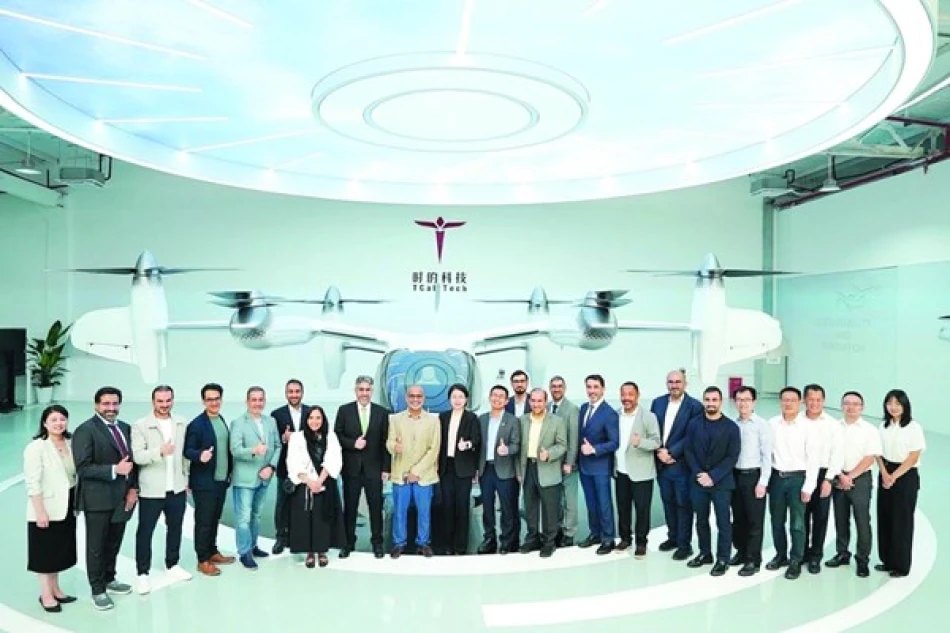
UAE Delegation Explores Strengthening Aviation Cooperation with China
UAE and China Deepen Aviation Partnership as Middle East Seeks Tech Independence
A high-level UAE aviation delegation has concluded strategic talks in China aimed at expanding technical and commercial cooperation in civil aviation, signaling the Emirates' broader push to diversify its aerospace partnerships beyond traditional Western suppliers. The meetings, which included discussions with China's state-owned aircraft manufacturer COMAC, reflect growing Middle Eastern interest in Chinese aviation technology amid shifting global supply chains.
Strategic Delegation Targets Manufacturing and Licensing Deals
The UAE delegation, led by Saif Mohammed Al Suwaidi, Director General of the General Civil Aviation Authority, brought together key figures from across the Emirates' aviation ecosystem. The group included representatives from the Abu Dhabi Investment Office, EDGE defense conglomerate, and Ras Al Khaimah's Civil Aviation Department—a composition that suggests serious commercial intent rather than mere diplomatic courtesy.
Al Suwaidi emphasized that UAE-China aviation cooperation continues to evolve, supported by strategic agreements and robust bilateral relations. The visit specifically targeted expanding partnerships in manufacturing, technical licensing, and knowledge exchange—areas where China has made significant strides in recent years.
COMAC Meetings Signal Potential Aircraft Orders
The delegation's extensive meetings with Commercial Aircraft Corporation of China (COMAC) represent perhaps the most significant development. COMAC, which competes directly with Boeing and Airbus through its C919 narrow-body aircraft, has been aggressively seeking international customers to validate its technology and break the Western duopoly in commercial aviation.
For the UAE, diversifying aircraft suppliers could provide leverage in future negotiations with Boeing and Airbus while potentially offering cost advantages. The Emirates' major carriers—Emirates, Etihad, and flydubai—collectively operate hundreds of aircraft and represent attractive customers for any manufacturer seeking Middle Eastern market penetration.
Technology Transfer Takes Center Stage
Beyond aircraft purchases, the delegation explored partnerships with Chinese aviation technology firms including T-CAP Technology, AutoFlight International, and CITIC-Lease's air navigation systems division. These discussions align with the UAE's Vision 2071 strategy, which aims to make the country a global hub for emerging technologies including advanced air mobility and autonomous flight systems.
Regulatory Cooperation Signals Long-term Commitment
The Beijing portion of the visit focused on regulatory harmonization—a critical but often overlooked aspect of aviation partnerships. Discussions with China's Civil Aviation Administration covered maintenance standards, licensing procedures, air navigation protocols, and institutional development.
This regulatory focus suggests both countries are serious about creating sustainable, long-term cooperation rather than one-off deals. Harmonized standards would facilitate everything from pilot training exchanges to maintenance outsourcing, potentially creating significant cost efficiencies for both nations' aviation sectors.
Geopolitical Implications for Global Aviation
The UAE's deepening aviation ties with China reflect broader shifts in global aerospace alliances. As the United States and Europe impose increasing restrictions on technology transfers to China, Beijing has intensified efforts to build alternative partnerships with strategically located nations like the UAE.
For the Emirates, balancing relationships with both Western and Chinese aviation suppliers provides strategic flexibility. The country's position as a global aviation hub—with Dubai and Abu Dhabi serving as major international transit points—gives it significant leverage in these negotiations.
The timing is particularly notable as the global aviation industry recovers from the pandemic while simultaneously grappling with supply chain disruptions and increasing pressure to adopt sustainable technologies. Chinese manufacturers like COMAC are positioning themselves as reliable alternatives to traditional suppliers, often with more flexible financing terms and fewer political restrictions.
Market Impact and Future Outlook
These developments could reshape competitive dynamics in the Middle Eastern aviation market. If the UAE proceeds with significant Chinese aircraft orders or technology partnerships, it could encourage other regional players—including Saudi Arabia and Qatar—to explore similar arrangements.
For investors, the UAE-China aviation partnership represents both opportunity and uncertainty. While diversified supplier relationships could reduce costs and improve operational flexibility, they also introduce new regulatory and geopolitical risks that didn't exist in the traditionally Western-dominated aviation ecosystem.
The success of this partnership will likely depend on China's ability to demonstrate that its aviation technology meets international safety and reliability standards—a challenge that will be closely watched by aviation authorities worldwide.
Most Viewed News

 Layla Al Mansoori
Layla Al Mansoori






